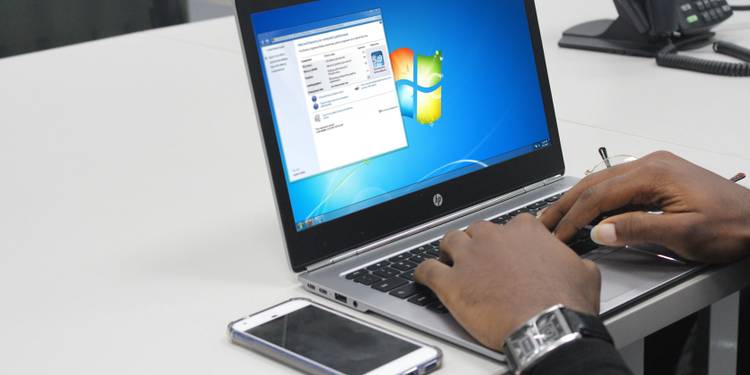How to Make a USB Installation Disk for Windows 7 Without Extra Software

Two Ways to Make a Bootable USB Windows 7 Installation Disk
You have two choices for making a bootable USB drive that can install Windows 7.
- Create a bootable disk using Windows tools: this requires no additional software
- Download the install from Microsoft: this is a far simpler solution
Let's take a look at each option.
What You'll Need to Install Windows 7 from USB
Without an optical drive on the target computer, installing Windows 7 as your preferred operating system is impossible. But if you have the original installation media and a USB flash drive, you can make it work.
To get started, you'll need:
- A working Windows 7 computer with a DVD drive and administrator rights
- A Windows 7 installation DVD
- 4GB USB flash drive or larger
This will also work with external USB hard drives instead of a USB thumb drive. However, all the data on the drive will be formatted and deleted.
The following steps can be completed on a Windows 7 computer. However, they're almost the same whatever operating system you're using, including Windows 10.
Open an Elevated Command Prompt
To start, insert your USB flash drive in your main PC---the one with the optical drive. You should also insert the Windows 7 installation DVD.
Click Start > All Programs > Accessories and right-click on Command Prompt. Select Run As Administrator. Of course, you need to be able to authenticate as the administrator on the PC you're using.
On Windows 10, click Start then type "command". Right-click the first result and select Run as administrator.
In the black command prompt window, open the disk partitioning tool with the command:
diskpartThis will open in a new command prompt window. Here, call up a list of disks attached to your PC.
list diskOne of the drives listed will be your USB drive. You'll probably be able to spot it based on the drive's capacity. Make a note of the disk number of the USB drive.
This is important to get right; otherwise, you'll end up losing data on other drives.
Next, partition the disk. Begin by selecting the disk and cleaning it.
Where you see the # sign, substitute it with the disk number of your USB device.
select disk #
cleanYou can then create a new partition.
create partition primary
select partition 1Make the partition active, then format as NTFS:
active
format fs=ntfs quickNext, issue the single command to set the disk as drive E:
assign letter eFinally, exit the DiskPart tool.
exitThe USB flash drive is now ready for Windows 7's installation files.
Make Your Windows 7 USB Bootable
The format step may take some time, depending on your computer's specification.
In the command prompt type
d:/boot/bootsect.exe /nt60 e:(This assumes D: is your DVD drive with the install DVD inserted, and you named E: your USB drive. This may differ on your PC, so check before entering the command.)
This will make your USB drive bootable.
Copy Windows 7 Installation Files to USB
The final step can be done from My Computer. Just open the installation DVD, highlight everything, and drag it across to the USB drive.
This can also take a while. When complete, you should be all set. Insert the USB disk into your new PC, then enter the BIOS to adjust the boot order. Your target computer may even have the Choose Boot Device option during start up.
Use Microsoft's Windows 7 USB Installer Tool
If you want a simpler solution to installing Windows 7 from a bootable USB drive, try Microsoft's dedicated, downloadable tool.
Download: Windows 7 USB Download Tool
The main download is just 2.8MB in size, so this should complete quickly. While you wait, insert your USB flash drive into your main PC. A 4GB drive should be large enough.
Meanwhile, you'll also need an ISO version of Windows 7. You can download it from Microsoft with a valid product key.
Download: Windows 7
While you wait for the download, install the installer tool, then launch from the Start menu.
You'll be prompted to find the ISO image file for Windows 7. Find the ISO file on your hard disk drive, then click Next.
Here, select USB device for the media type you plan to create. In the next screen, use the dropdown menu to select the USB drive, then Begin Copying. Wait while the process completes.
When the bar reaches 100%, you'll spot some status information. Any problems that occurred are listed here. If you need another bootable USB Windows 7 installation disk, click Start Over to repeat the process.
Otherwise, click the X in the top-right corner to close, before safely ejecting your USB disk. It is now ready to install Windows 7 on a suitable computer of your choice.
(Source: makeuseof)
